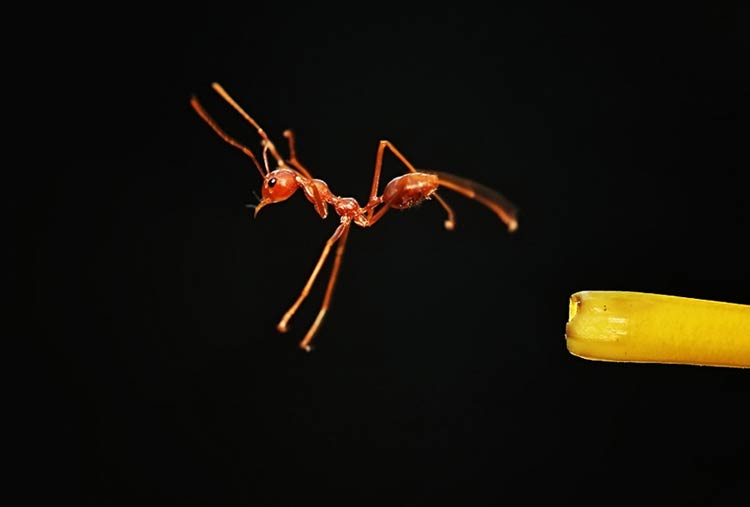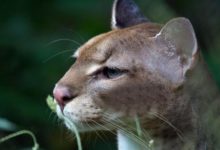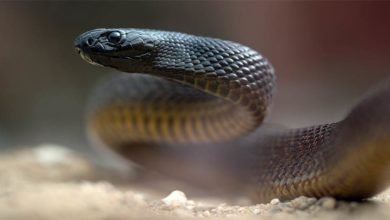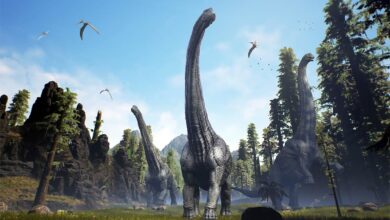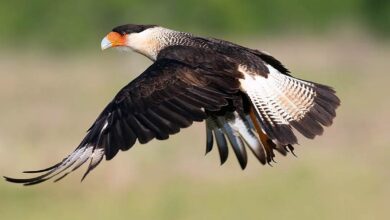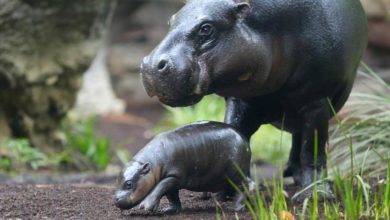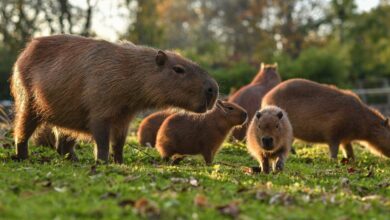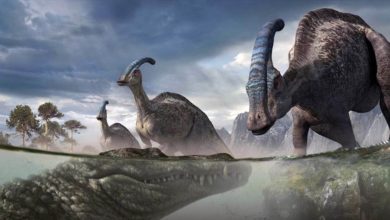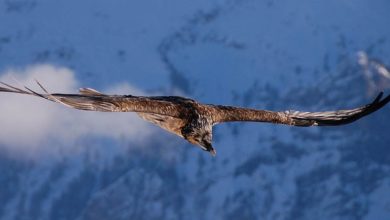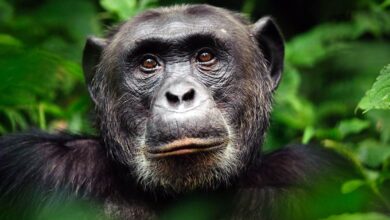Ants – a journey into their life and behavior
Ants are some of the most fascinating and hardworking creatures on our planet, with over 13,800 of an estimated total of 22,000 species have been classified. From their intricate social structures and advanced communication methods, to their impressive strength and ability to work together, these tiny insects never fail to amaze us. Whether you’re watching them march in perfect formation, carrying objects many times their size, or building complex underground colonies, there’s no denying that ants are a true marvel of the natural world. So, get ready to delve into the fascinating world of ants and discover the incredible feats of these tiny creatures that often go unnoticed by human eyes.
Ants are eusocial insects that belong to the family Formicidae. They are members of the order Hymenoptera, which also includes bees and wasps. Ants are characterized by their distinct head, thorax, and abdomen, as well as their elbowed antennae and powerful jaws. They range in size from just a few millimeters to several centimeters, with the largest species being the fossil Titanomyrma giganteum.
Ants have a highly developed social structure, with colonies consisting of one or more queens, male drones, and female workers. The queen is responsible for laying eggs, while the workers are responsible for feeding and caring for the young, building and maintaining the nest, and defending the colony.

The Secret Life of Ants: How They Navigate and Survive in Their World
Ants communicate with each other using a combination of chemical signals and physical cues. They use pheromones to mark trails, signal alarm, and indicate food sources. Some ant species also use sound to communicate, producing high-pitched noises that can be heard by other ants.
Ants are omnivorous and feed on a wide variety of food sources, including other insects, nectar, and plant matter. They play important roles in ecosystem functioning, serving as pollinators and seed dispersers, as well as predators and scavengers.
Ants are known for their remarkable strength and ability to carry objects many times their own weight. This is due to the powerful muscles in their heads and jaws, as well as the sticky pads on their feet that allow them to climb walls and ceilings with ease.
Ants are fascinating insects that exhibit a complex social structure, communicate using chemical and physical signals, and play important roles in ecosystem functioning. They are well-adapted to their environments and possess unique physical and behavioral traits that enable them to survive and thrive in a wide range of habitats.

Taxonomy
Ants belong to the family Formicidae, which is part of the order Hymenoptera. The Hymenoptera also includes bees, wasps, and sawflies. Within the Formicidae family, there are over 13,800 known species that have been classified. These species are further divided into several subfamilies, including Dolichoderinae, Formicinae, Myrmicinae, Ponerinae, and others. The taxonomy of ants is constantly evolving as new species are discovered and re-classified based on genetic and morphological evidence.
Scientific classification
- Kingdom: Animalia
- Phylum: Arthropoda
- Class: Insecta
- Order: Hymenoptera
- Infraorder: Aculeata
- Superfamily: Formicoidea
- Family: Formicidae

Basic Facts About Ants
- Ants are social insects and live in large colonies that can contain thousands or even millions of individuals.
- Ants are found on every continent except Antarctica, and they play important roles in many ecosystems, including as predators, scavengers, pollinators, and seed dispersers.
- There are over 13,800 (of an estimated 22,000) known species of ants, with new species being discovered and described each year.
- Ants have a highly organized social structure with the division of labor. The colony is typically headed by a queen, whose sole purpose is to lay eggs, and the rest of the colony is made up of female workers and male drones.
- Ants communicate with each other using chemicals called pheromones, which are used to signal alarm, trail marking, and mating.
- Ants are known for their remarkable strength and ability to carry objects many times their own weight. This is due to the powerful muscles in their heads and jaws, as well as the sticky pads on their feet that allow them to climb walls and ceilings with ease.
- Ants are omnivorous, feeding on a wide variety of food sources including insects, nectar, and plant matter.
- Some ant species have developed unique adaptations, such as trap-jaws, which are mandibles that snap shut at incredibly fast speeds to catch prey or defend the colony.
Ants are a subject of great interest and study, with researchers exploring their behavior, ecology, and evolution.
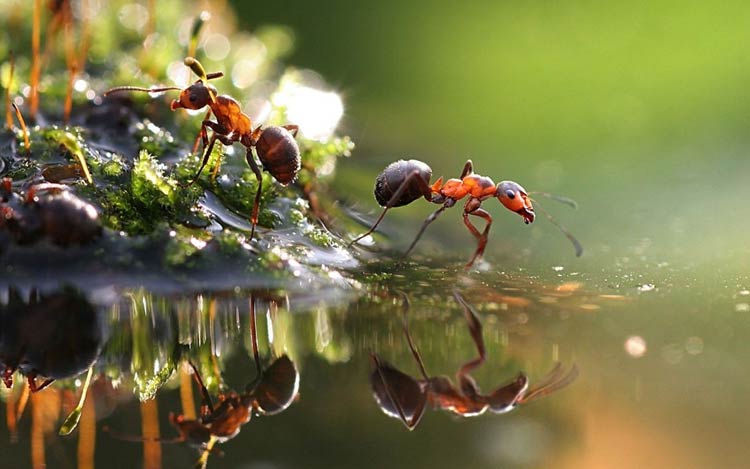
Distribution and habitat
Ants are found on every continent in the world except Antarctica. They have adapted to a wide range of habitats, from deserts to rainforests and everything in between. Ants can live in trees, underground, in leaf litter, and even in human-made structures like buildings and sidewalks.
Different species of ants have different habitat preferences. Some species are adapted to living in the canopy of trees, while others live in the soil or leaf litter. Some species are found in desert environments, while others live in wet rainforests. Some species have even adapted to urban environments, and can be found in parks, gardens, and even inside buildings.
Ants are known for their ability to modify their environment to suit their needs. For example, leafcutter ants create extensive underground tunnels and chambers to grow their fungus gardens, while weaver ants build nests by weaving together leaves with silk produced by their larvae.
The breakdown of ant species by region
- Neotropics: 2,162 species
- Nearctic: 580 species
- Europe: 180 species
- Africa: 2,500 species
- Asia: 2,080 species
- Melanesia: 275 species
- Australia: 985 species
- Polynesia: 42 species
It is important to note that these numbers are estimates, and new ant species are still being discovered and described each year. Additionally, some regions may have a higher diversity of ant species than others, and some species may be more widespread than others. Nonetheless, this gives an idea of the distribution of ant species around the world.
Ants have a cosmopolitan distribution and can be found in virtually every terrestrial ecosystem on Earth. They play important roles in these ecosystems as predators, scavengers, seed dispersers, and more.
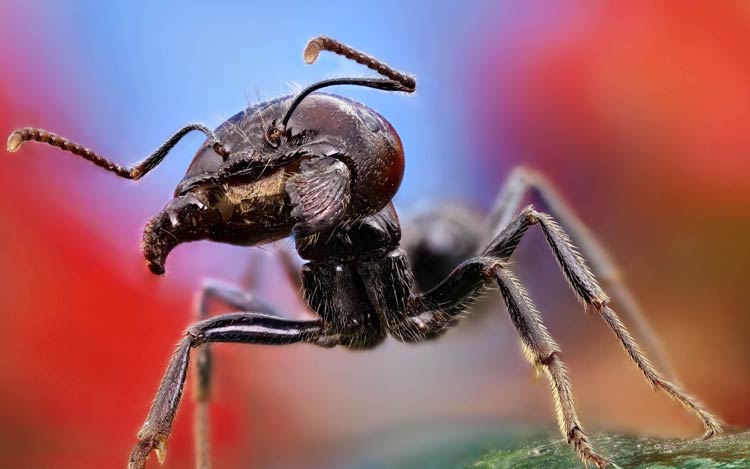
Characteristics
Appearance
Ants vary in appearance depending on the species, but they all share some common characteristics. Most ants have a slender, segmented body with three distinct regions: the head, thorax, and abdomen. They have six legs and a pair of antennae attached to their heads.
The size of ants can vary widely, with some species measuring less than a millimeter in length while others can reach over 50 millimeters in length. Ants can come in a range of colors, including black, brown, red, yellow, and even green or blue. Some species have a smooth, shiny appearance while others may have hair or spines covering their bodies.
One of the most notable features of ants is their ability to move quickly and with agility. Their legs are adapted for walking and climbing, and they are able to move both forwards and backwards with ease. Many species of ants are also capable of carrying objects many times their own body weight, thanks to specialized structures called metapleural glands.
Ants also have specialized mouthparts adapted for feeding. They have mandibles that are used for biting and cutting, as well as a proboscis for sucking liquids. Some species also have stingers, which are used for defense or to subdue prey.
Overall, ants are incredibly diverse in their appearance, with adaptations that allow them to thrive in a wide range of environments and ecosystems.
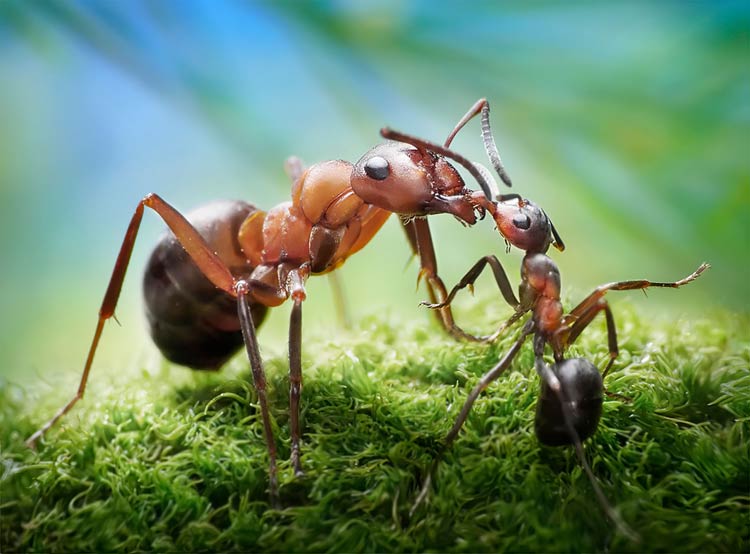
Size
Ants vary widely in size depending on the species. The smallest ants can be less than a millimeter in length, while the largest ants can be over 50 millimeters long. As a general rule, worker ants tend to be smaller than the queen and male ants.
Some examples of ant sizes for different species:
- One of the smallest ant species is the pharaoh ant (Monomorium pharaonis), which measures around 1.5 mm in length.
- The largest ant species is the fossil Titanomyrma giganteum, which had a queen that was around 6 cm long with a wingspan of 15 cm.
- The bullet ant (Paraponera clavata), which is known for its extremely painful sting, measures around 18-30 mm in length.
- The carpenter ant (Camponotus spp.) can measure up to 20 mm in length.
- The army ant (Eciton burchellii) measures around 10-15 mm in length.
It’s worth noting that size can also vary within a species depending on factors such as nutrition and caste. Queens tend to be larger than workers, and males are usually smaller than both.

Polymorphism
Polymorphism in ants refers to the phenomenon where different individuals of the same species have distinct physical characteristics, such as size and shape, within a single colony. Ants exhibit three types of polymorphism: workers, soldiers, and reproductive females.
Workers are the most common type of ant found in a colony, and they are responsible for tasks such as foraging, nest maintenance, and caring for the brood. Within a single colony, there can be different sizes of workers, ranging from tiny to large, with each size having specific roles and tasks. The larger workers tend to be better at foraging, while the smaller workers are better at caring for the brood.
Soldiers are a specialized type of worker ant, which have larger heads and stronger mandibles, used for defense against predators or other ant colonies. Soldier ants are usually larger than workers and have a more robust build.
Reproductive females, also known as queens and princesses, are responsible for producing offspring. These individuals are usually larger than workers and have wings during the mating season. After mating, the queen sheds her wings and begins to lay eggs, starting a new colony.
Overall, polymorphism allows ants to perform various tasks efficiently and adapt to their environment. By having distinct physical characteristics, individuals within a colony can specialize in specific tasks, increasing the colony’s chances of survival and success.

Behavior, Lifestyle and ecology
Ants are social insects that live in colonies, and they have a highly organized and sophisticated social structure. The behavior of ants is regulated by pheromones, chemicals that they use to communicate with each other.
Ants are divided into castes, which are specialized groups within the colony that perform specific tasks. These castes include queens, males, workers, and soldiers. The queen’s primary function is to lay eggs, while the workers take care of the brood, forage for food, and defend the colony. Soldiers are responsible for protecting the colony from predators and intruders.
Ant colonies can range in size from just a few individuals to millions of individuals, depending on the species. Some ant species are nomadic, moving their nests from place to place as they search for food, while others establish permanent nests.
Ants play an important role in many ecosystems. They are primary consumers, feeding on a variety of food sources such as nectar, insects, and seeds. They also serve as prey for many other animals, such as birds and anteaters.
Some ant species have developed symbiotic relationships with other organisms. For example, some species of ants protect and tend to aphids, which produce honeydew, a sweet, sticky substance that the ants consume. In exchange, the ants protect the aphids from predators.
Ants are also known for their ability to modify their environment. They can build elaborate nests and tunnels, and some species of ants cultivate fungus gardens inside their nests. These gardens provide a source of food for the ants and require careful maintenance.
Ants have a fascinating and complex lifestyle and play an important role in many ecosystems around the world.
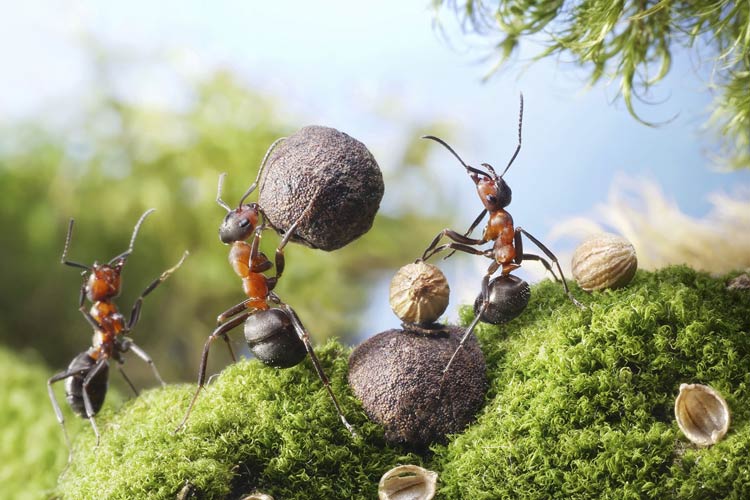
Communication
Ants communicate with each other using a variety of methods, including chemical, tactile, and auditory signals. The most important means of communication is through pheromones, which are chemical signals that ants use to mark trails, signal danger, and identify nestmates.
Ants release pheromones from glands located throughout their bodies, including the mandibular, postpharyngeal, and Dufour’s glands. Different pheromones can be used to communicate different messages, such as the location of food or the presence of an enemy.
Ants also communicate through touch, using their antennae to detect vibrations and chemicals on the bodies of other ants. This tactile communication is important in recognizing nestmates and identifying ants from other colonies.
In some species, ants also use sound to communicate, producing audible vibrations by drumming their bodies or vibrating their wings. These acoustic signals can be used to attract mates, warn of danger, or coordinate group activities.
The communication methods of ants are highly sophisticated and allow them to work together in large, coordinated groups, even in the absence of a centralized command structure.

Defense
Ants have evolved a variety of defense mechanisms to protect themselves and their colonies from predators and other threats. One of the most important defense mechanisms is their ability to work together in large numbers, using their coordinated behavior and pheromone communication to defend their nests.
Some species of ants also have specialized defensive structures, such as stingers, mandibles, or chemical sprays, which they use to deter predators. For example, some species of ants have stingers that they use to inject venom into their enemies, while others have powerful mandibles that they can use to bite and hold onto their enemies.
In addition to physical defenses, ants also use chemical defenses to protect themselves. Many species of ants produce chemicals that are toxic to other animals, including formic acid, which is used by some species as a weapon against predators.
Ants also have specialized soldier castes, which are larger and more heavily armored than the worker ants. These soldiers are tasked with defending the colony and may have specialized structures, such as enlarged mandibles or stingers, to help them in their defense.
Overall, the defense mechanisms of ants are highly effective and allow them to protect themselves and their colonies from a wide variety of threats.
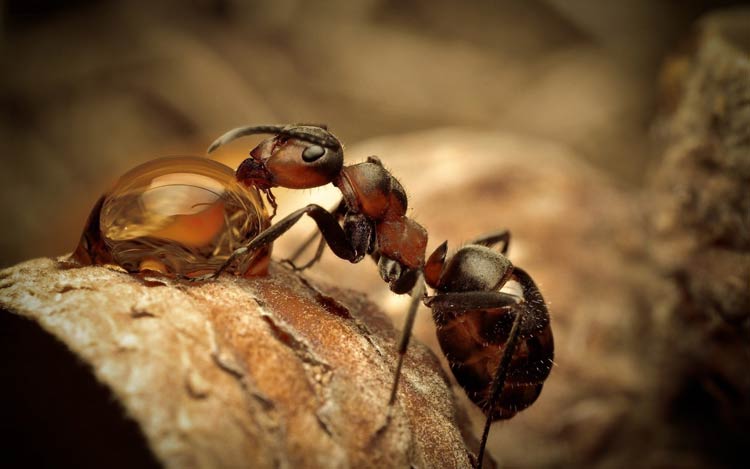
Learning
Ants have been shown to be capable of learning and adapting their behavior to changing environments. They are able to learn through a variety of mechanisms, including trial and error, observation, and communication with other members of their colony.
One of the most well-known examples of ant learning is their ability to navigate and forage for food. Ants use a combination of visual cues, scent trails, and memory to find and retrieve food, and they are able to learn and adapt their foraging behavior based on the availability and location of food sources.
Ants have also been shown to be capable of learning from the experiences of other ants. For example, if a foraging ant discovers a new food source, it will leave a trail of pheromones that other ants can follow to the food. The other ants can then learn the location of the food source and adjust their foraging behavior accordingly.
In addition to learning about food sources, ants are also capable of learning about other aspects of their environment. For example, some species of ants have been shown to learn to avoid certain types of predators or to avoid areas that are dangerous.
Overall, ants are highly adaptable and capable of learning and adjusting their behavior in response to changes in their environment, making them highly successful and resilient as a group.
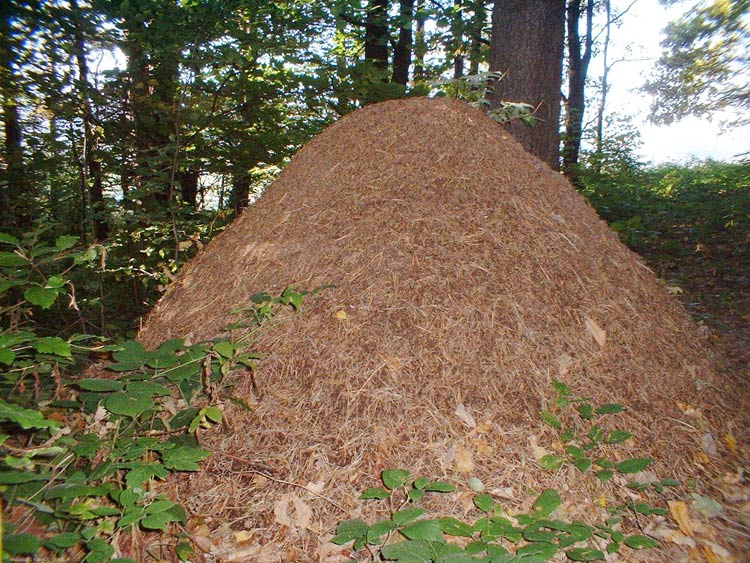
Nest construction
Ants are known for their elaborate nest construction, which can vary greatly depending on the species and the environment in which they live. Some ants build simple nests in the ground, while others construct complex structures that can include multiple chambers and tunnels.
The construction of an ant nest typically involves a division of labor among the members of the colony. The queen is responsible for laying eggs, while the workers are responsible for building and maintaining the nest, as well as foraging for food and caring for the young.
Ants use a variety of materials to construct their nests, including soil, plant matter, and secretions from their own bodies. Some species of ants also use materials such as pebbles, sand, or twigs to reinforce their nests and create more complex structures.
Ant nests can take on a variety of shapes and sizes, ranging from simple holes in the ground to large mounds or structures built around trees or rocks. Some ants also construct their nests underground, using tunnels and chambers to create a complex network of passageways and living spaces.
Overall, ant nest construction is a highly organized and coordinated process that allows ants to create safe and secure living spaces for their colonies, helping to ensure their survival and success in a wide range of environments.
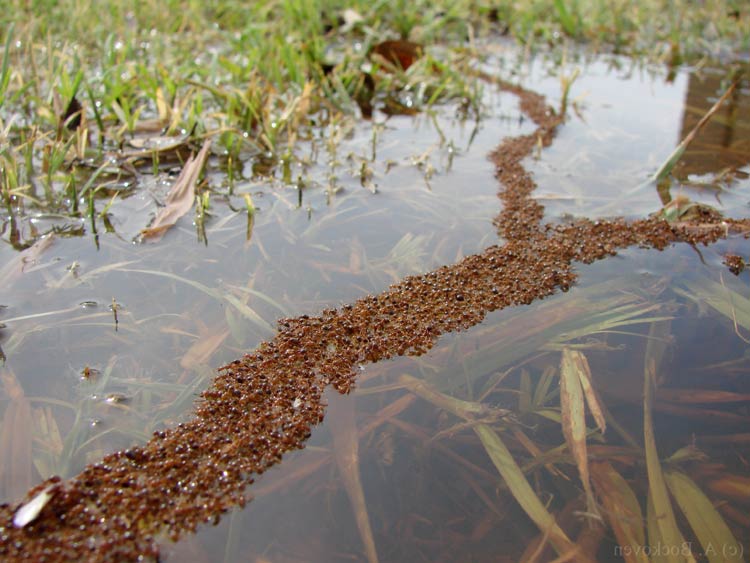
Navigation
Ants have an incredible ability to navigate their surroundings, even over long distances. They use a combination of visual, chemical, and tactile cues to find their way and communicate with other members of their colony.
One of the key ways that ants navigate is through the use of pheromones, or chemical signals, which they leave behind as they move around. By following these trails, ants can find food sources, locate their nest, and communicate with other members of their colony.
In addition to pheromones, ants also use visual cues to navigate. They are able to detect changes in light and shadow, which helps them to orient themselves and find their way in both bright and dark environments.
Some species of ants are also able to use the Earth’s magnetic field to navigate. By detecting the polarity of the Earth’s magnetic field, ants are able to determine their direction and location relative to their nest and other landmarks.
Overall, ants are highly adept at navigation, using a variety of sensory inputs and communication methods to find their way in even the most challenging environments. This ability to navigate and communicate is critical to the success and survival of ant colonies in the wild.
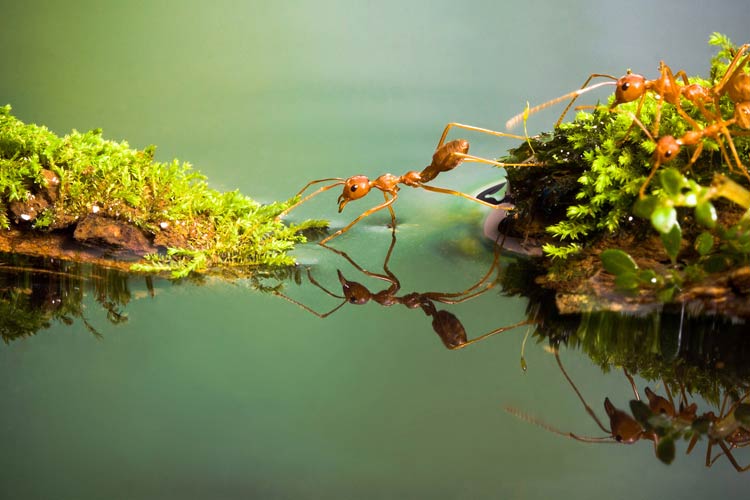
Locomotion
Ants are able to move in a variety of ways, including walking, running, climbing, and even jumping. Their bodies are designed for efficient movement, with six legs and a lightweight exoskeleton that allows them to move quickly and agilely.
One of the most remarkable forms of locomotion in ants is their ability to climb vertical surfaces and even hang upside down. They are able to do this thanks to tiny hairs on their feet, which create a powerful adhesive force that allows them to grip onto even the smoothest surfaces.
Ants also have specialized legs and body structures that allow them to move quickly and efficiently over a range of terrains. Some species have long legs that enable them to cover ground quickly, while others have powerful mandibles that they use to pull themselves up and over obstacles.
Overall, ants are incredibly versatile when it comes to locomotion, with a range of adaptations and strategies that allow them to move effectively in different environments and situations. This agility and mobility is critical to their success as social insects, allowing them to forage for food, defend their territory, and communicate with other members of their colony.
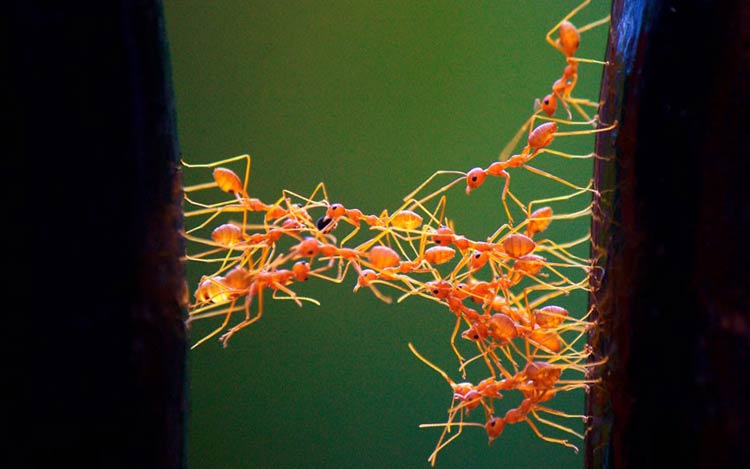
Cooperation and competition
Cooperation and competition are key aspects of ant behavior, and they are critical to the success of ant colonies. Ants are highly social insects, living in large groups that can contain thousands or even millions of individuals. Within these colonies, ants work together to carry out a range of tasks, including foraging for food, caring for the young, and defending the nest.
Cooperation is essential to the survival and success of ant colonies, as it allows individuals to pool their resources and work together towards a common goal. Ants use a range of communication strategies to coordinate their activities, including chemical signals known as pheromones, touch, and even sound.
At the same time, competition also plays a key role in ant behavior. Within a colony, there may be competition for resources, such as food and nesting sites, and some individuals may compete for dominance or reproductive opportunities. Between colonies, there may be competition for territory and resources, and ants may engage in aggressive behaviors such as fighting and raiding.
Overall, the balance between cooperation and competition is critical to the success of ant colonies. By working together and sharing resources, ants are able to build complex societies and thrive in a range of environments. At the same time, competition ensures that resources are used efficiently and that colonies are able to defend their territory and resources from other ant colonies.
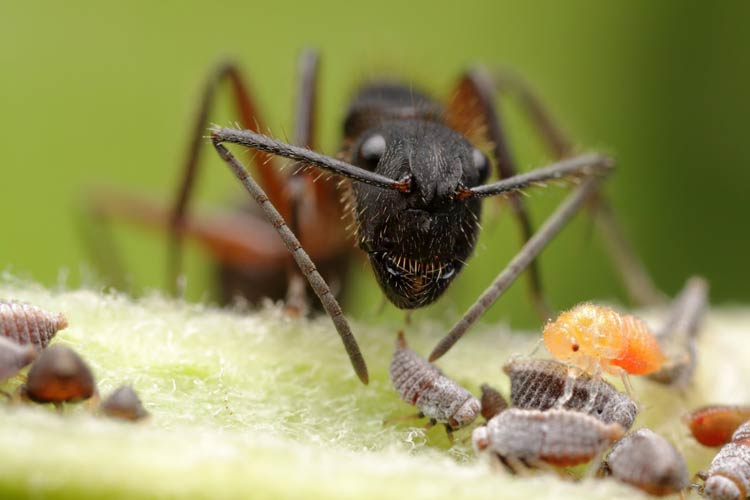
Relationships with other organisms
Ants have a range of relationships with other organisms, both positive and negative. One of the most well-known relationships is with aphids, which are small insects that feed on plant sap. Some species of ants will actually “farm” aphids, protecting them from predators and “milking” them for a sweet, sugary liquid that the aphids excrete. In exchange, the ants provide protection and care for the aphids.
Ants also have symbiotic relationships with a range of other organisms. For example, some ant species have a mutualistic relationship with certain species of plants, in which the ants protect the plants from herbivores and in return, the plants provide food and shelter for the ants.
At the same time, ants can also have negative relationships with other organisms. For example, some species of ants are aggressive predators, and they may attack and kill other insects or even small animals. In addition, some ants are known to invade and damage crops and other agricultural plants.
Overall, the relationships between ants and other organisms are complex and varied, reflecting the diversity of ant behavior and ecology.
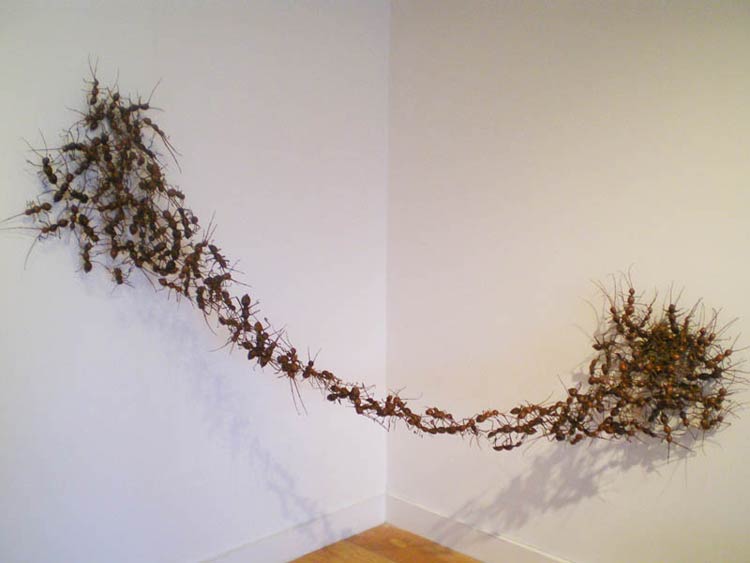
Diet
Ants have a varied diet depending on the species and their habitat. Most ants are omnivores, meaning they eat both plant and animal matter. Their diet includes insects, small animals, seeds, nectar, fruit, and even other ants.
Some ants are specialized in their diet. For example, leaf-cutter ants feed on fungus that they cultivate on the leaves they cut, while army ants prey on other insects and small animals in large groups.
Ants also have a unique method of feeding called trophallaxis. Trophallaxis is a process where ants share food by passing it from mouth to mouth. This allows the colony to distribute food evenly and efficiently and helps to regulate the colony’s food supply.
Additionally, some ants have developed a mutualistic relationship with other organisms. For example, some species of ants protect and tend to aphids, which produce honeydew, a sweet, sticky substance that the ants consume. In exchange, the ants protect the aphids from predators and even move them to new food sources when necessary.
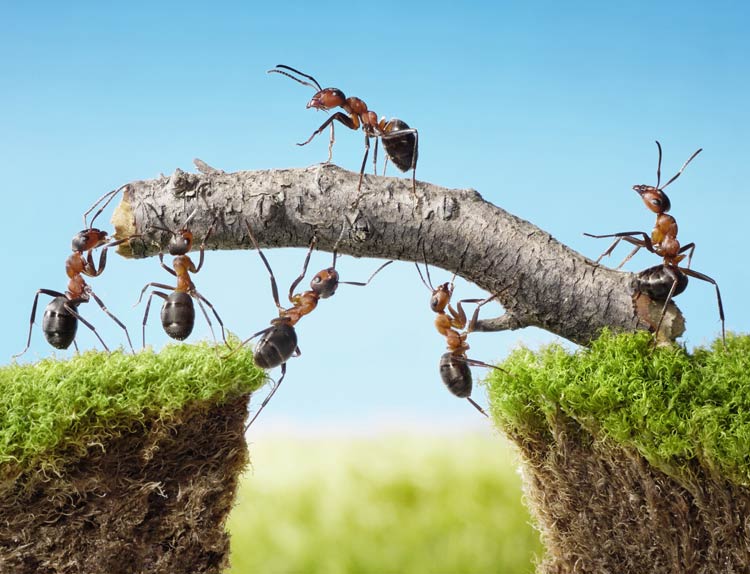
Reproduction and parenting
Ants have a complex social structure with reproductive individuals (queens and males) and non-reproductive individuals (workers and soldiers).
The reproduction process begins when a mated queen ant establishes a colony by laying eggs. The queen ant is responsible for laying all the eggs in the colony, which can number in the thousands or even millions depending on the species. Some species of ants can reproduce both sexually and asexually, depending on environmental conditions.
The eggs hatch into larvae, which are fed and cared for by the worker ants. The larvae go through several developmental stages before becoming pupae and finally emerging as adult ants. The workers are responsible for taking care of the young, foraging for food, and defending the colony.
The reproductive individuals in a colony, including the queen and males, have specialized roles. The queen is responsible for laying eggs and regulating the behavior and development of the other ants in the colony. Males are responsible for mating with the queen, after which they die.
In some species of ants, the workers can also lay eggs, but these eggs are not fertilized and only produce male ants.
Parenting in ants is a collective effort. All members of the colony work together to ensure the survival and success of the colony. The workers care for the young and protect the colony from predators, while the queen regulates the behavior of the other ants and ensures the reproductive success of the colony.
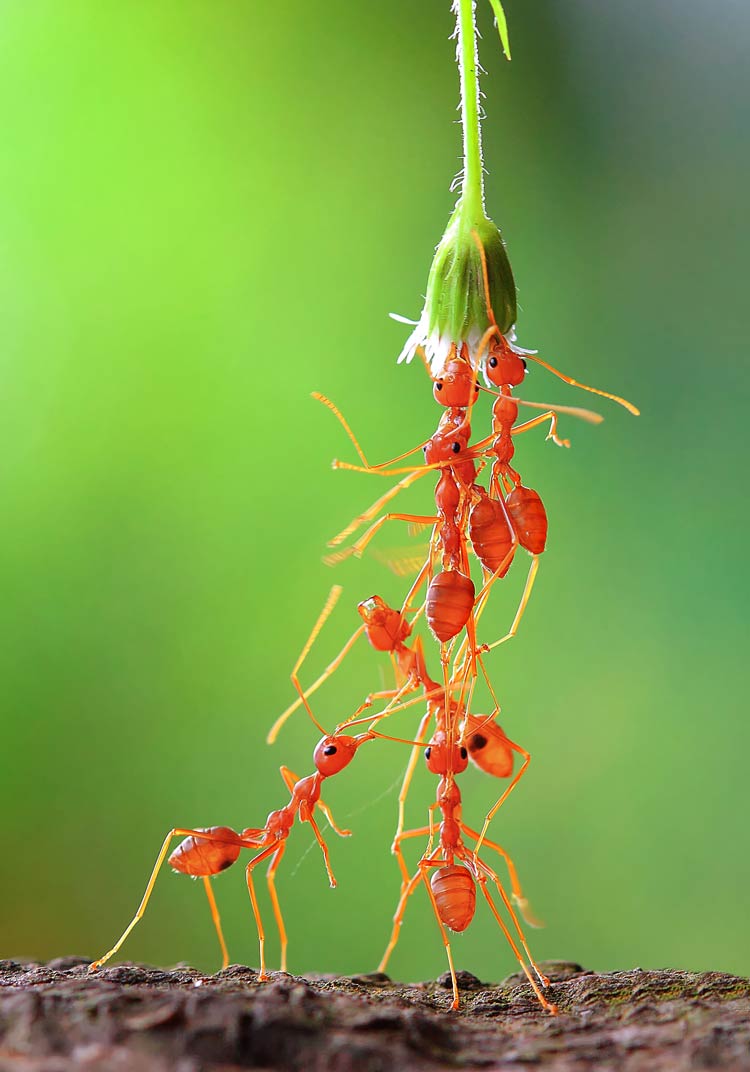
Life cycle
The life cycle of an ant starts with an egg, which hatches into a larva. The larva is fed by the worker ants and grows rapidly, shedding its skin several times as it grows. After a few weeks, the larva spins a cocoon around itself and enters the pupal stage.
During the pupal stage, the ant undergoes metamorphosis, gradually developing the features of an adult ant. When it emerges from the cocoon, it is a fully-grown adult, either a worker ant, a male, or a queen.
Worker ants are sterile females and their job is to forage for food, care for the brood, and maintain the nest. Males are produced in large numbers during the mating season and their sole purpose is to mate with the queen. After mating, the male ants die.
Queens are the reproductive females of the colony and their job is to lay eggs. Depending on the species, a queen ant can lay anywhere from a few dozen to several thousand eggs in her lifetime. The queen may also engage in behavior to suppress the reproduction of other females in the colony to maintain her own reproductive dominance.
The life cycle of an ant varies depending on the species and environmental conditions. For some species, the entire life cycle from egg to adult can take just a few weeks, while for others it can take several months or even years. The lifespan of an ant also varies depending on the species, with some worker ants living only a few months and queens living for several years or even decades.
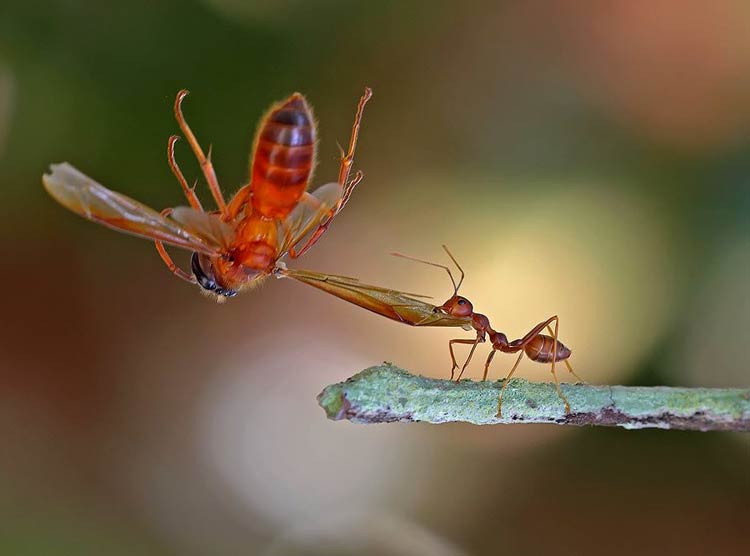
Predators and Threats
Ants face a variety of threats and predators in their natural environments. Some of the most common threats include:
- Predators
Many animals prey on ants, including birds, reptiles, amphibians, and other insects. Some species of ants have developed specialized defenses against these predators, such as stingers or powerful mandibles. - Parasites
Ants can be parasitized by a variety of organisms, including fungi, bacteria, viruses, and other insects. Parasites can weaken or kill ant colonies, reducing their ability to forage for food or defend themselves from predators. - Habitat loss
As human development encroaches on natural habitats, many species of ants are losing their homes. Deforestation, urbanization, and agricultural practices can all destroy or fragment ant habitats, making it difficult for ants to find food or establish new colonies. - Climate change
Changes in temperature and precipitation patterns can also have an impact on ant populations. Some species of ants are adapted to specific environmental conditions, and changes in climate can disrupt their foraging patterns or reduce their ability to reproduce. - Pesticides
Many people use pesticides to control ant populations, but these chemicals can also have negative impacts on other organisms in the environment. In addition, some ant species have developed resistance to certain types of pesticides, making it difficult to control their populations using traditional methods.
Ants face a range of threats and challenges in their natural environments, and conservation efforts are needed to protect these important and ecologically significant insects.

Interactions with humans
Ants can have both positive and negative interactions with humans. On the positive side, ants play an important role in many ecosystems, helping to control the populations of other insects and aiding in the decomposition of organic matter. In addition, some species of ants are used in traditional medicine to treat a range of ailments, and the chemicals produced by ants have potential uses in the development of new drugs.
On the negative side, some species of ants are considered pests, invading homes and buildings and causing damage. In addition, some species of ants can sting and bite humans, causing pain and allergic reactions in some cases. Some species of ants are also known to damage crops and other agricultural plants, causing economic losses.
Overall, the interactions between ants and humans are complex and varied, with both positive and negative aspects. While some species of ants are viewed as pests, others are valued for their contributions to ecosystems and human well-being. As with many other aspects of the natural world, managing interactions with ants requires careful consideration and balancing of competing interests.

Population
According to a recent study published in Proceedings of the National Academy of Sciences (PNAS), there are at least 20 quadrillion ants on Earth. This staggering number is based on an analysis of 465 studies that measured the number of ants locally in the field using standardized techniques such as setting traps and analyzing the number of ants on a given patch of leaves on the ground.
It’s important to determine the global population of ants as they are an essential part of ecosystems around the world, playing a significant role in seed dispersal, hosting organisms, and serving as either predators or prey. Ants are also crucial for measuring the consequences of changes to their habitat, including those caused by climate change.
While there are more than 13,800 named species and subspecies of ants found all over the planet, nearly two-thirds of them are found in only two types of ecosystems: tropical forests and savannahs. The estimated number of ants and their total global biomass is thought to be 12 megatons of dry carbon, which is more than that of wild birds and mammals combined and 20 percent of that of humans.
However, some major regions, such as central Africa and Asia, had little or no data available, meaning the true abundance of ants globally is likely to be considerably higher than the estimated 20 quadrillions. Therefore, it’s essential to fill these remaining gaps to achieve a comprehensive picture of insect diversity.
In the future, researchers plan to study the environmental factors influencing the population density of ants to gain a better understanding of their global distribution and how changes to their habitat could impact their populations.

Status and conservation
Ants are not typically considered as a conservation priority, but they play a vital role in maintaining the balance of many ecosystems. Changes in land use, habitat destruction, and climate change can all have negative impacts on ant populations, which can in turn have cascading effects on other species and ecological processes. Some ant species are also threatened by invasive ant species that can outcompete or displace them, as well as pesticide use and other human activities.
Efforts to conserve ants and their habitats are relatively limited compared to other taxa, but some conservation initiatives do exist. For example, the International Union for Conservation of Nature (IUCN) has established the Ant Specialist Group to assess and monitor the conservation status of ant species, and to develop strategies to protect them. Additionally, some organizations and researchers are working to raise awareness about the importance of ants and their role in ecosystems, and to promote sustainable land use practices that can help to protect them.

Ants in numbers
Ants are one of the most numerous and successful groups of insects on Earth. It is estimated that there are over 13,800 known species and subspecies of ants, with an equal number yet to be described. A recent study published in the journal Proceedings of the National Academy of Sciences estimated that there are at least 20 quadrillion ants on Earth. This staggering number is likely an underestimate, as there are still large regions of the world, such as central Africa and Asia, with little or no data on ant populations.
Ants play a crucial role in many ecosystems, serving as predators, prey, seed dispersers, and hosts for other organisms. Their total global biomass is estimated to be 12 megatons of dry carbon, which is more than that of wild birds and mammals combined, and 20% of that of humans. Despite their abundance and ecological importance, however, many ant species are threatened by habitat destruction, climate change, and other human activities. Some ant species are also considered pests, and efforts are made to control their populations in agriculture and urban areas.
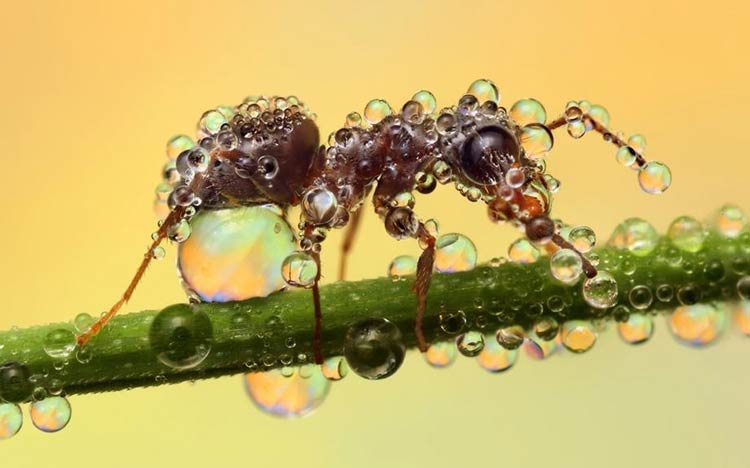
Ants in culture
Ants have been a part of human culture for thousands of years. In many ancient societies, ants were considered to be symbols of diligence, hard work, and cooperation. For example, in Aesop’s fables, ants were often featured as hardworking creatures that stored food for the winter. The Greek philosopher Aristotle also wrote about ants, observing their behavior and social organization.
Ants have also been important in religious and spiritual practices. In Hindu mythology, the god Vishnu was said to have taken the form of an ant to find a lost earring. In some Native American cultures, ants were believed to have healing powers and were used in traditional medicine.
In modern culture, ants are often featured in popular media, such as in movies, TV shows, and video games. They are often portrayed as fierce and organized warriors, such as in the movie “Antz” or the video game “Age of Empires II”. Ants have also been the subject of scientific research and experimentation, particularly in the field of biomimicry, which studies how biological systems can be used to inspire technological innovation.
Overall, ants have played a significant role in human culture throughout history, serving as symbols of hard work, cooperation, and ingenuity.

Ants in movies
Ants have been featured in various movies, both as main characters and as supporting roles. Here are some examples:
- Antz (1998) – An animated movie that tells the story of a worker ant named Z who doesn’t fit in with his colony’s conformist ways.
- A Bug’s Life (1998) – Another animated movie that follows the life of an ant named Flik, who tries to save his colony from a group of grasshoppers.
- Them! (1954) – A classic science fiction movie where ants mutate to enormous sizes and terrorize humans.
- Phase IV (1974) – A science fiction movie where ants become intelligent and form a collective consciousness, threatening humanity.
- Empire of the Ants (1977) – A horror movie where a group of people is trapped on an island overrun by giant, mutated ants.
- The Naked Jungle (1954) – A drama movie set in a South American plantation where a swarm of army ants threatens to destroy everything in their path.
- Antboy (2013) – A Danish superhero movie where a boy is bitten by an ant and gains superpowers.
- Ant-Man (2015) – A Marvel superhero movie where a man gains the ability to shrink down to the size of an ant and communicate with them.
These movies showcase the diverse ways in which ants can be portrayed in popular culture, from heroic protagonists to terrifying villains.
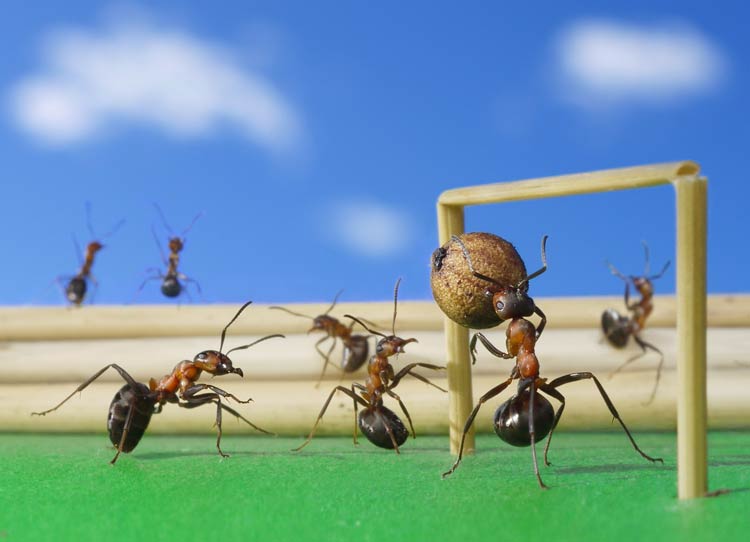
Interesting facts about Ants
- Ants range in size from 0.75 to 52 millimeters (0.03 to 2.05 inches), with the largest species being the fossil Titanomyrma giganteum, the queen of which was 6 centimeters (2.36 inches) long with a wingspan of 15 centimeters (5.91 inches).
- Ants have a cosmopolitan distribution. They are found on all continents except Antarctica, and only a few large islands, such as Greenland, Iceland, parts of Polynesia and the Hawaiian Islands lack native ant species.
- The number of ant species in each region is as follows: Neotropics (2,162), Nearctic (580), Europe (180), Africa (2,500), Asia (2,080), Melanesia (275), Australia (985), and Polynesia (42).
- Ant colonies can be long-lived. The queens can live for up to 30 years, and workers live from 1 to 3 years. Males, however, are more transitory, being quite short-lived and surviving for only a few weeks. Ant queens are estimated to live 100 times as long as solitary insects of a similar size.
- Trap-jaw ants of the genus Odontomachus are equipped with mandibles called trap-jaws, which snap shut faster than any other predatory appendages within the animal kingdom. One study of Odontomachus bauri recorded peak speeds of between 126 and 230 kilometers per hour (78 and 143 miles per hour), with the jaws closing within 130 microseconds on average.
- Foraging ants travel distances of up to 200 meters (656 feet) from their nest, and scent trails allow them to find their way back even in the dark. In hot and arid regions, day-foraging ants face death by desiccation, so the ability to find the shortest route back to the nest reduces that risk.
- Ants can lift and carry objects up to 50 times their body weight.
- Some species of ants use their strong jaws to defend their colonies by biting and stinging intruders.
- Certain types of ants have a symbiotic relationship with aphids, protecting them in exchange for the sweet honeydew they produce.
- Ants can communicate with each other through chemical signals called pheromones.
- In some cultures, ants are used as a source of food, either as a snack or as an ingredient in dishes.
- Ants have been known to form alliances with other species of ants, even from different colonies, to protect themselves against predators.
- The leafcutter ant is known for its impressive ability to cut and carry large pieces of leaves many times its own size, which it uses to cultivate a fungus for food.
- Some species of ants have been known to enslave other ants, forcing them to do labor for their own colony.
- Ants have been around for over 130 million years and are considered one of the most successful groups of insects on Earth.
- Queen ants have the ability to lay up to one million eggs in their lifetime, ensuring the survival of their colony.
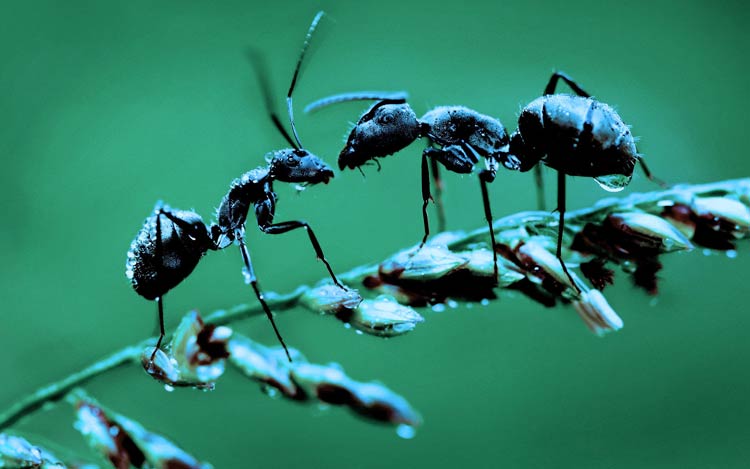
Q&A (questions and answers) about Ants
Q: What are ants?
A: Ants are social insects that belong to the family Formicidae. They are known for their highly organized colonies and cooperative behavior.
Q: How many species of ants are there?
A: There are over 13,800 named species of ants, and likely many more that have yet to be discovered.
Q: What do ants eat?
A: Ants are omnivores and their diet varies depending on the species. They may eat nectar, pollen, fruits, seeds, insects, and other small animals.
Q: How do ants communicate with each other?
A: Ants communicate with each other through chemical signals called pheromones. They also use touch and sound to communicate.
Q: How do ants build their nests?
A: Ants build their nests by excavating soil or using other materials such as plant fibers or sand. Some species build elaborate nests with chambers and tunnels.
Q: How long do ants live?
A: The lifespan of an ant varies depending on the species. Some worker ants may only live for a few weeks, while the queen of the colony may live for several years.
Q: Are ants harmful to humans?
A: While most species of ants are not harmful to humans, some can inflict painful stings or bites. Additionally, some species of ants can damage crops or invade homes.
Q: How do ants defend themselves?
A: Ants may defend themselves by biting or stinging predators, or by releasing chemicals to signal other ants to come and defend the colony.
Q: How do ants navigate?
A: Ants navigate using a combination of sight, smell, and memory. They also use the position of the sun and the Earth’s magnetic field to help them navigate.
Q: What role do ants play in the ecosystem?
A: Ants play a variety of roles in ecosystems, including pollinating plants, controlling pest populations, and recycling nutrients through their waste.
